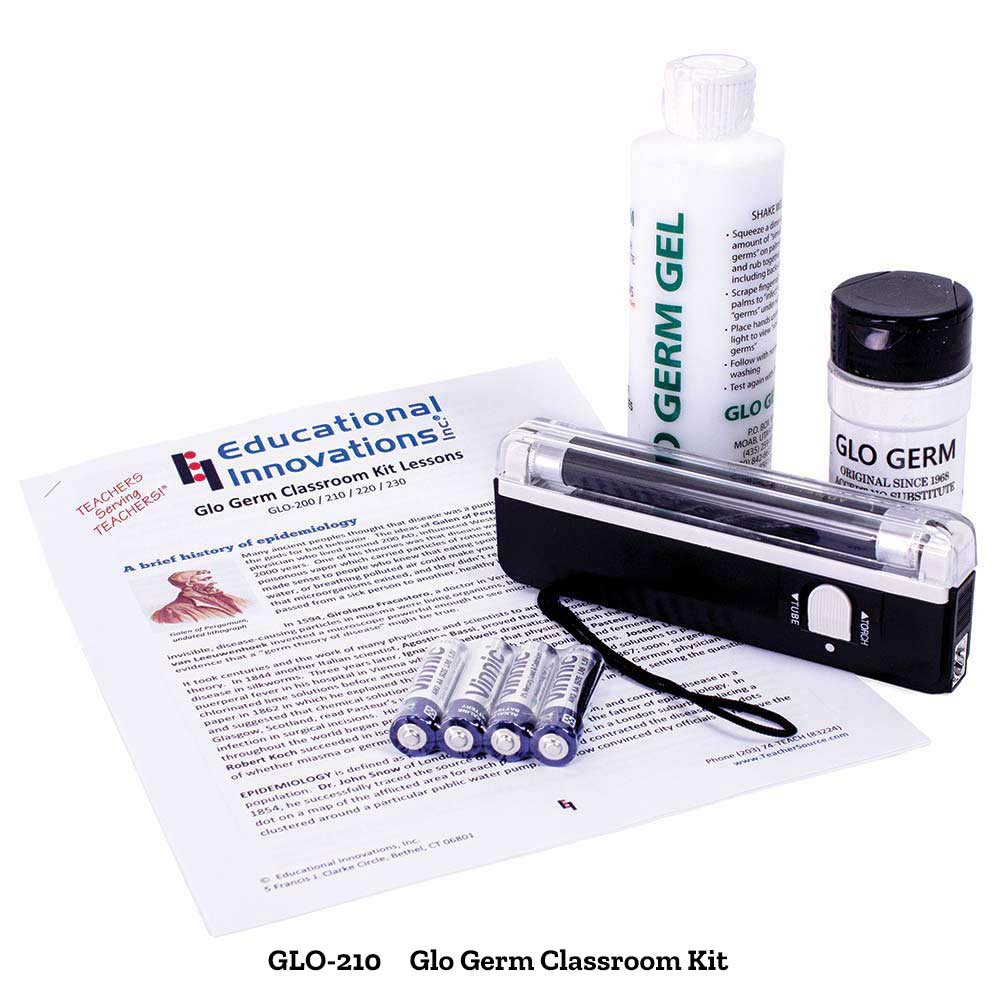 by Nancy Foote
by Nancy Foote
It’s always fun to put a new item on the curiosity table to see how my students will react. The newest addition was Arctic Flare UV Sensitive Putty, a gift from our friends at Educational Innovations.
 by Nancy Foote
by Nancy Foote
It’s always fun to put a new item on the curiosity table to see how my students will react. The newest addition was Arctic Flare UV Sensitive Putty, a gift from our friends at Educational Innovations.
 Teaching about ultraviolet light is always fun. Read on for ideas you’ll want to try in your classroom. We have compiled in-class activities, discussion ideas and do-it-yourself projects that will have your students GLOWING with excitement as they explore the hidden world of UV light.
Teaching about ultraviolet light is always fun. Read on for ideas you’ll want to try in your classroom. We have compiled in-class activities, discussion ideas and do-it-yourself projects that will have your students GLOWING with excitement as they explore the hidden world of UV light.
Let us know how these ideas worked! If you have a favorite lesson or activity on ultraviolet light, please share it with us in the comments below.

Here’s what customers are saying about some of their favorite ultraviolet light materials.
If you have a favorite Educational Innovations product, let us know! We’d love to share your review with your fellow teachers and science lovers.
 Educational Innovations’ Glo Germ demonstration kit has been a fixture in science and health classes for years. Here’s what some of our customers are saying about our Glo Germ powder, lotion and kit.
Educational Innovations’ Glo Germ demonstration kit has been a fixture in science and health classes for years. Here’s what some of our customers are saying about our Glo Germ powder, lotion and kit.
“I’ve used this with elementary through high school students. It really makes an impression! Usually it takes about 3 or 4 hand washings before they get all of the ‘germs’ off their hands and fingernails, etc. Seeing is believing!”
—Shelley in Stillwater, OK
 “I have used the same kit for years; a little goes a long way. Very good buy. I used it to teach microbiology, anatomy, and forensic science. It would be great for family and consumer science, too.”
“I have used the same kit for years; a little goes a long way. Very good buy. I used it to teach microbiology, anatomy, and forensic science. It would be great for family and consumer science, too.”
—Shelley in Stillwater, OK
“This product is amazing! I used it with my middle school students and it completely captivated them to see that even after washing there hands they still had traces of germs between their fingers and in their nails. It was a great way to start our germ unit and made them want to learn more.”
—Jennifer in Grand Junction, CO
“Great for teaching infection to high school students. Just use the powder, not the lotion. Plant some on your hands as you shake the kids’ hands or on the classroom doorknob. Then shine the light and see where it has spread.”
—Mary in Killeen, TX
“Works great under even the cheapest little UV flashlight. Really eye opening for kids when teaching how germs are spread or how ineffectively their hand washing are working. Worth the money as a little goes a long way.”
—Sharon in Plymouth, MA
Ultraviolet detecting beads contain pigments that change color when exposed to ultraviolet light from the sun or certain other UV sources. The electromagnetic radiation needed to affect change is between 360 and 300 nm in wavelength. This includes the high-energy part of UV Type A (400-320 nm) and the low energy part of UV Type B (320-280 nm). Long wave fluorescent type black lights work well; incandescent black lights and UV-C lamps will not change the color of the beads.
The dye molecules consist of two large, planar, conjugated systems that are orthogonal to one another. No resonance occurs between two orthogonal parts of a molecule. Imagine two planes at right angles to one another, connected by a carbon atom. When high energy UV light excites the central carbon atom, the two smaller planar conjugated parts form one large conjugated planar molecule. Read the rest of this entry »